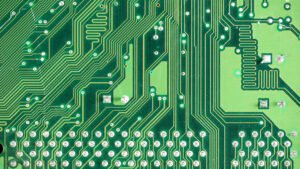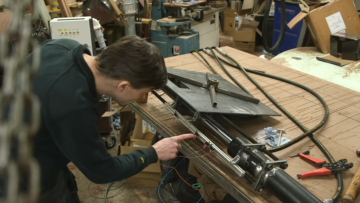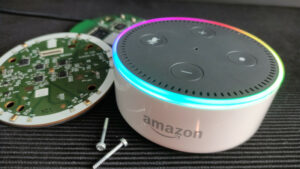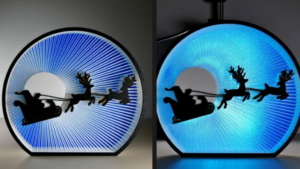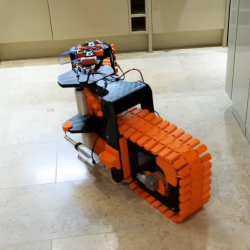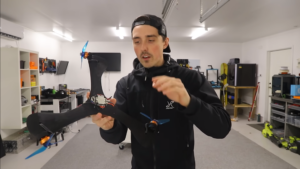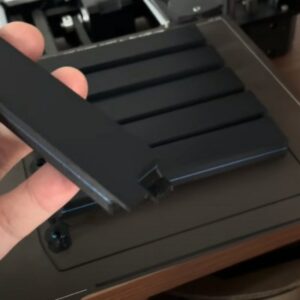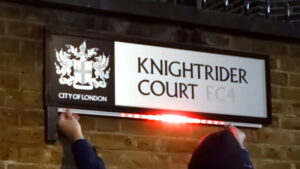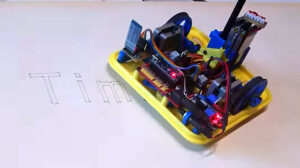Beep. We’ve come a long way since June 26, 1974 when the first bar code was scanned at a grocery store in Troy, Ohio. That legendary pack of Juicy Fruit proved that even the smallest of items could now carry numbers associated with inventory and price.
By now, we’re all too familiar with this sound as self-checkouts have become the norm. Whereas you yourself could at one time literally check out during the transaction, you must now be on your toes and play find the bar code on every item.
What does the consumer gain from the bar code today? Practically nothing, except the chance to purchase, and potentially return, the item without too much hassle. Well, the non-profit outfit that runs the bar code world — GS1 US — wants to change all that. By 2027, they are confident that all 1D bar codes will be replaced with 2D bar codes similar to QR codes. Why?
Sunrise, Sunset: 2027
In a worldwide initiative called Sunrise 2027, the entire retail industry will sunset 12-digit barcodes and use a 2D web-enabled version going forward. The new 2D barcodes can store much more information than the lowly 1D version, which has the potential to benefit both consumers and store owners.
The 2D barcode will “take you on an experience that the brand wants you to have.”
— Carrie Wilkie, SVP of standards and technology at GS1 US
Should the consumer be so inclined, they’ll be able to access a wealth of information about the product using the new barcode — everything from an ingredients list to recipes, potential allergens, promotions, and recycling information for the container.
The barcodes will open the doors for extras like loyalty points, coupons, games, you name it. And just think — clothes and other textiles could finally have legible washing instructions, so we don’t have to rely on those ancient glyphs.
Stores will be able to respond much faster to product recalls and even do things like flag foods that are approaching the sell-by date so they can pull them and sell them at a discount. They also expect major improvements when it comes to inventory control on the back end.
A Brief History of Barcodes
Barcodes were created to remove the human element of logistics, or at least lessen the burden. The history of the barcode begins almost 100 years ago with a system to keep track of railroad cars.
In the 1930s, a group of Westinghouse engineers invented an automated card sorting system that used bars printed on paper. These bars were read by a photo-electric cell, which ultimately decided which trap door that particular piece of paper would fall through to be sorted.
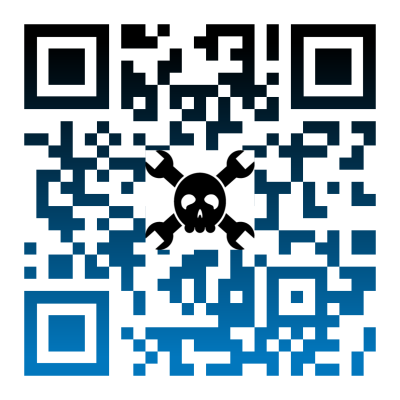 The first barcodes that resemble what we see today came about in the 1940s as a way to speed up the process at the grocery store checkout. Graduate student Bernard Silver and his friend Norman Woodland created a bar code system that used Morse code, but lengthened the dots and dashes vertically to form bars.
The first barcodes that resemble what we see today came about in the 1940s as a way to speed up the process at the grocery store checkout. Graduate student Bernard Silver and his friend Norman Woodland created a bar code system that used Morse code, but lengthened the dots and dashes vertically to form bars.
Although they came up with a way of reading the barcodes and even got IBM interested in the idea in the early 1950s, it was ultimately decided that the technology to make it all work just wasn’t there yet.
The solution came in the 1960s when George Laurer was assigned the task at Research Triangle Park. His team created the UPC — a bar code that is essentially the one we all know and love today — and which is about to be phased out.
By now, we’re also all familiar with QR codes, but did you know that they’re almost 30 years old? Quick Response codes were created in 1994 by Japanese company Denso Wave to keep track of cars and parts in the auto industry. By adding a second dimension, much more data can be stored, with checksums and redundancy to boot.
2D Or Not 2D
Between now and 2027, we’ll likely see a long period of transition wherein products have both types of barcodes. In the meantime, GS1 US has released a barcode capabilities kit so that retailers can evaluate their POS systems. They’ve also issued a Getting Started guide (PDF) that essentially amounts to a) evaluate readiness by scanning a large number of example barcodes and b) upgrade POS system if it doesn’t pass 2D muster.
According to the press release, early testing indicated that scanning 2D barcodes and reading/ingesting the data are two different things, which presents another wrinkle.
Already In the Matrix
But the change is already happening. The first company to use 2D barcodes in US stores is Puma. For now, the barcode goes to a link that tells all about Puma’s sustainability efforts and what materials are in that pair of shoes.
Those touch screen Coke machines that have taken over fast food places in the last decade or so? Those now feature a QR code that lets you concoct your beverage from your phone so you don’t have to touch that screen.
In the rest of the world, Australia and New Zealand are using 2D barcodes to provide freshness data for deli and meat counter products. And a retailer in Japan is already using 2D barcodes to give discounts on demand for foods with three or fewer days of shelf life remaining.
While this transition could slow things down for a good long while, it sounds like we’ll be better for it in the long run. At least most people don’t stand there and write a check anymore.
- SEO Powered Content & PR Distribution. Get Amplified Today.
- PlatoAiStream. Web3 Data Intelligence. Knowledge Amplified. Access Here.
- Minting the Future w Adryenn Ashley. Access Here.
- Source: https://hackaday.com/2023/05/03/barcodes-enter-the-matrix-in-2027/
- :has
- :is
- :not
- $UP
- 1
- 100
- 1994
- 26
- 2D
- 30
- a
- Able
- About
- access
- adding
- ago
- All
- already
- also
- amounts
- an
- Ancient
- and
- Another
- anymore
- approaching
- ARE
- AS
- assigned
- associated
- At
- Australia
- auto
- Automated
- Axios
- back
- bar
- bars
- BE
- become
- benefit
- Better
- BEVERAGE
- both
- brand
- burden
- but
- by
- called
- came
- CAN
- capabilities
- card
- card sorting
- carry
- cars
- Chance
- change
- check
- Checkout
- clothes
- code
- come
- comes
- company
- confident
- consumer
- Consumers
- Container
- control
- could
- Counter
- created
- data
- Date
- Days
- decade
- decided
- Demand
- DID
- different
- Dimension
- Discount
- discounts
- do
- does
- Doesn’t
- Dont
- Door
- doors
- down
- during
- Early
- efforts
- element
- end
- Engineers
- Enter
- Entire
- essentially
- evaluate
- Even
- Every
- everything
- example
- Except
- expect
- experience
- Fall
- familiar
- FAST
- faster
- Feature
- fewer
- Finally
- Find
- First
- food
- foods
- For
- form
- Forward
- friend
- from
- Gain
- Games
- George
- Give
- Goes
- going
- good
- graduate
- grocery
- Group
- Happening
- Have
- his
- history
- HTTPS
- human
- Human Element
- IBM
- idea
- if
- improvements
- in
- Inclined
- indicated
- industry
- information
- Initiative
- instructions
- interested
- Invented
- inventory
- Issued
- IT
- items
- Japan
- Japanese
- june
- just
- Keep
- kit
- Know
- large
- Last
- least
- legendary
- Lets
- Life
- like
- likely
- LINK
- List
- logistics
- Long
- love
- Loyalty
- Machines
- major
- make
- materials
- Matrix
- max-width
- meantime
- Meat
- more
- most
- much
- must
- name
- New
- New Zealand
- non-profit
- nothing
- now
- number
- numbers
- of
- Ohio
- Old
- on
- ONE
- open
- or
- Other
- out
- over
- owners
- Pack
- Paper
- Park
- particular
- parts
- pass
- People
- period
- Phased
- phone
- piece
- Places
- plato
- Plato Data Intelligence
- PlatoData
- Play
- points
- PoS
- potential
- potentially
- practically
- presents
- press
- Press Release
- price
- process
- Product
- Products
- Promotions
- proved
- provide
- PUMA
- purchase
- QR code
- qr-codes
- Quick
- Read
- Readiness
- Reading
- Recipes
- recycling
- release
- released
- rely
- remaining
- remove
- replaced
- research
- Respond
- response
- REST
- retail
- retail industry
- retailer
- retailers
- return
- Run
- scanning
- Screen
- Second
- see
- sell
- Shelf
- Silver
- similar
- since
- slow
- So
- solution
- Sound
- speed
- stand
- standards
- started
- store
- stored
- stores
- Student
- Sunset
- Sustainability
- system
- Systems
- Task
- team
- Technology
- tells
- Testing
- textiles
- than
- that
- The
- the world
- their
- Them
- There.
- These
- they
- things
- think
- this
- those
- three
- Through
- time
- to
- today
- too
- touch
- track
- transaction
- transition
- two
- types
- Ultimately
- upgrade
- us
- use
- used
- using
- version
- vertically
- wants
- was
- Way..
- we
- Wealth
- WELL
- were
- What
- when
- which
- while
- why
- will
- with
- without
- Work
- world
- worldwide
- would
- write
- years
- yet
- you
- Your
- yourself
- Zealand
- zephyrnet

